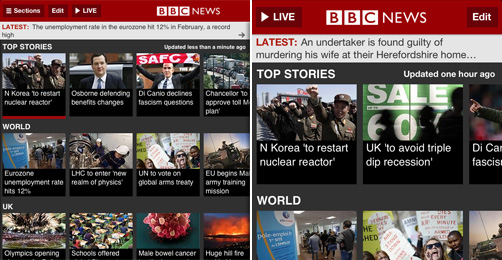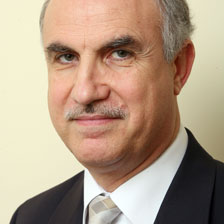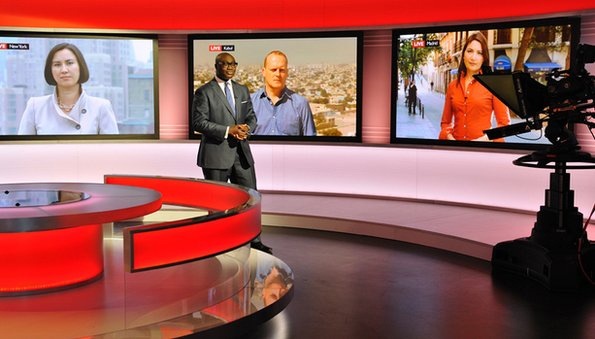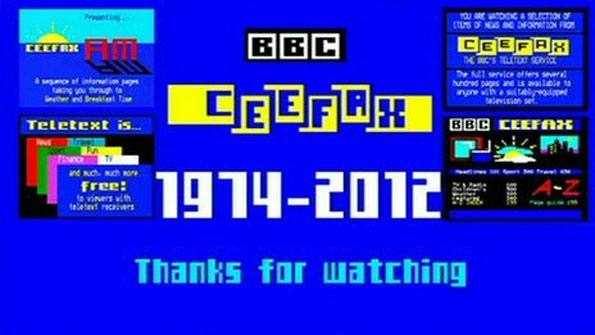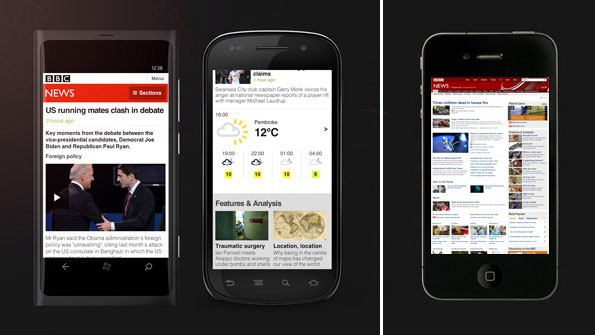Earlier this year we launched a new version of the BBC News mobile site, making it easier and quicker to use. This week we’ve begun the process of directing all mobile users automatically to that site. This means that anyone who visits BBC News on their mobile will be taken to the version of the site best suited to the type of phone they are using.
Many of you already visit the mobile site regularly but, up until now, people looking for BBC News on their phone will often have found themselves on the desktop version of the site, which is designed for desktop PCs, macs and laptops – all with much bigger screens. If you are using this desktop version on your phone it can be awkward to pinch, zoom and scan the stories on a small mobile screen.
This image shows how the mobile site displays on a smartphone – compared with the desktop version:
To tackle this, we’ve been working over the past six months to improve and add to the mobile site, taking on board your feedback about how you’d like to see it develop.
We’ve recently added video clips for iPhone and Android users, and made it easier to navigate the site. (We hope to extend this video service to other types of mobile in the future.) We’ve also added easier ways of getting to local news and weather services, something many of you asked for. You can read more about those changes here.
So, we’re confident that the mobile site now has the wide range of content you are looking for and that it offers a better experience on a small screen than the desktop site, which is why we are taking the step of automatically redirecting mobile users there.
Of course, you may be happy to keep visiting the desktop site on your mobile and if you want to continue doing so just scroll to the bottom of the page and tap on the link for the desktop site. Your choice will be remembered for the next time you visit.
Similarly, if you use a mobile and find that you’re not redirected to the new site, you can scroll to the bottom of the page and select the mobile site.
This is the latest stage in the ongoing work by our News product team on responsive design – a way of presenting our content to you in the most suitable way by detecting the type of device you are using and displaying the format best adapted for it. We are doing similar work to optimise the site for tablet users too.
The number of people coming to BBC News on mobile continues to grow. In an average week, 13.3m users worldwide use their mobile or tablet to visit the BBC News site and apps – around one-third of total users to BBC News Online.
If you are one of them, our aim is to offer you the full range and depth of BBC News content, whatever device you are using, whilst also making best use of the screen size.
We hope you’ll like using the new mobile site, and if you’d like to leave comments and feedback about it, or have questions, please post them below. Or you can tweet your views using the hashtags #bbcnews #responsive
Update: Thanks for your comments. Here are some answers to the questions posted below:
John Walsh – Kindle: As a tablet device, albeit with a smaller screen than some makes, Kindles currently default to the desktop site. Users of any device including Kindles are certainly free to use the mobile version if they prefer by clicking the link at the bottom of the screen. Our aim is to further improve the experience for progressively larger screen sizes over time.
Jesse Moore – HTC: We know there are some devices that are incorrectly classified by our systems, often due to the fact that some devices have different identifiers dependent on the mobile network they are on. In any case we will certainly be doing everything we can to correct errors and ensure the redirection behaves as it should. In the meantime, please use the “Mobile Site” link at the foot of the page should you wish to use the mobile site – the selection will be remembered as long as cookies are not cleared. At this time the redirect only applies to the BBC Homepage and the News site.
Cogito Ergo Sum – Windows phone: This change applies to the browser experience, which is already designed to work for Windows Phone although at present we are unable to provide video for those devices.
Costmeabob – We take accessibility for our services seriously so, for example, our browser and applications are designed to work with Voiceover on iOS.
Tim Stey – If you do still prefer the desktop version you can select the link at the bottom of the page and you’ll be taken to it. Your choice will be remembered next time you visit the site. We are working on enhancing the mobile site still further to include more content where the technology allows it – but with navigation more suited to a smaller screen size.
Josh Tumath – This blog post might be of interest, about our overall approach to responsive design published in March by Chris Russell, head of product for BBC News Online.
Steve Herrmann is editor of the BBC News website.



